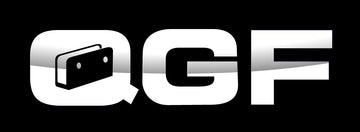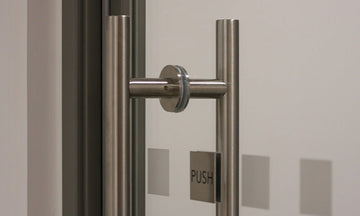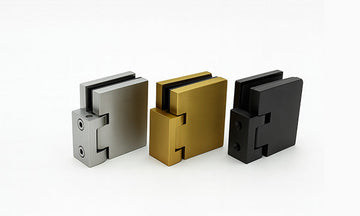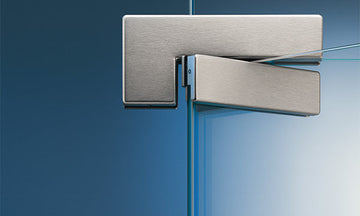Complete Guide to Glass Balustrade Fixings: Posts, Clamps & Connectors
by Saman Mojab on Jul 12, 2025
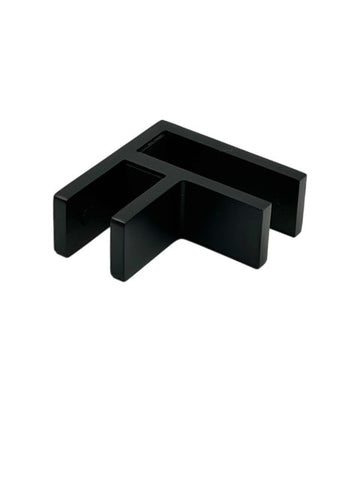
In modern architectural design, glass balustrades offer a sleek, minimalist aesthetic while providing essential safety and boundary definition. Behind their seamless appearance lies a system of precision-engineered components known as glass balustrade fixings. These include posts, clamps, and connectors—each playing a crucial role in securing glass panels in place and ensuring long-term structural integrity.
Whether for staircases, balconies, terraces, or commercial interiors, the correct selection and installation of these fixings is vital. At Quality Glass Fittings Ltd, a wide range of balustrade hardware—ranging from stainless steel posts to adjustable clamps and glass-to-glass connectors—is available to support frameless and semi-frameless applications.
This guide will explore the various types of glass balustrade fixings, their uses, installation tips, and how to choose the right components for your project.

Understanding the Role of Glass Balustrade Fixings
Glass panels on their own cannot provide support or safety—they rely on a combination of glass posts, glass clamps, and glass connectors to be securely mounted and aligned. These fixings must handle not only the load-bearing requirements but also environmental stresses such as wind, vibration, and thermal expansion.
-
Posts provide vertical structural support and are usually anchored to the floor or staircase.
-
Clamps grip the glass securely, distributing weight and maintaining alignment.
-
Connectors join glass panels to each other or to supporting structures like walls or posts.
By combining these elements in a coordinated system, glass balustrades can be installed with or without handrails, creating an open and modern aesthetic that complies with building regulations and safety standards.
Glass Balustrade Posts: Types and Applications
Balustrade posts serve as the primary vertical supports in semi-frameless systems. They are typically made from 304 or 316-grade stainless steel, depending on whether the installation is indoor or outdoor. Posts can be round, square, or rectangular and may be fixed using base plates, flanges, or core-drilled methods.
Common Types of Balustrade Posts:
-
Surface-Mounted Posts with Base Plates: Easy to install, suitable for balconies and terraces.
-
Core-Drilled Posts: Inserted into holes in concrete or tile, providing a cleaner look.
-
Pre-Assembled Posts: Factory-fitted with glass clamps and handrail brackets for faster installation.
-
Posts with Adjustable Brackets: Allow fine-tuning of glass alignment, ideal for uneven floors or stairs.
Applications:
-
Staircases (internal or external)
-
Rooftop terraces
-
Pool fencing
-
Decking areas
-
Commercial walkways
When selecting posts, consider:
-
Glass thickness and weight (typically 10mm–12mm toughened glass)
-
Environmental exposure (e.g., 316 marine-grade for coastal areas)
-
Finish and aesthetics (polished, brushed, black matte)

Glass Clamps for Balustrades: Secure and Stylish
Glass clamps are the most visible fixing components, mounted on posts or walls to hold the glass panels. At Quality Glass Fittings, these are available in multiple styles—D-type, square, and round—each offering unique visual and structural properties.
Key Features:
-
Made from solid brass or stainless steel
-
Compatible with 8mm, 10mm, and 12mm glass
-
Available with rubber gaskets to protect the glass
-
Designed with safety pins or grub screws for additional security
Clamp Styles:
-
D-Type Clamps: Rounded edge, commonly used on tubular posts
-
Square Clamps: Sharp modern look, often used with square posts
-
Wall-Mounted Clamps: Secure glass directly to vertical surfaces without posts
-
Adjustable Clamps: Allow fine-angle adjustments for staircases or angled balustrades
Finish Options:
-
Polished stainless steel
-
Brushed satin
-
Matte black
-
PVD coatings (for brass or bronze tones)
Glass clamps not only hold panels in place—they contribute to the overall design language of the space, making them a functional and visual element.
Glass Connectors: Linking Panels with Precision
Glass connectors are used to join two or more glass panels directly, or to attach panels to posts or structural elements. These are vital in frameless glass balustrade systems where minimal hardware visibility is preferred.
Types of Glass Connectors:
-
Inline Connectors: Join two glass panels in a straight line
-
90° Connectors: Create right-angle corners (e.g., for balconies or landings)
-
135° Connectors: Ideal for angled stair turns or unique layouts
-
T-Connectors: Allow perpendicular connections in complex systems
-
Corner Clamps: Secure internal or external corners of glass panels
-
Wall Connectors: Attach the end panel to an adjacent wall
Use Cases:
-
Seamless glass runs in commercial staircases
-
U-shaped balconies or landings
-
Partitioning zones in open-plan interiors
When using glass connectors:
-
Ensure compatibility with glass thickness
-
Choose corrosion-resistant finishes for outdoor use
-
Use precision-aligned fixings to prevent glass stress and cracking
Comparison Table: Posts vs. Clamps vs. Connectors
| Component | Primary Function | Installation Area | Finish Options |
|---|---|---|---|
| Balustrade Posts | Provide vertical structural support | Stairs, decks, balconies | Brushed, polished, black, PVD |
| Glass Clamps | Secure glass to posts or walls | Frameless or semi-frameless systems | D-type, square, round, matte finishes |
| Glass Connectors | Join glass-to-glass or to fixed structures | Frameless installations, partitions | Chrome, satin, black, brass |

